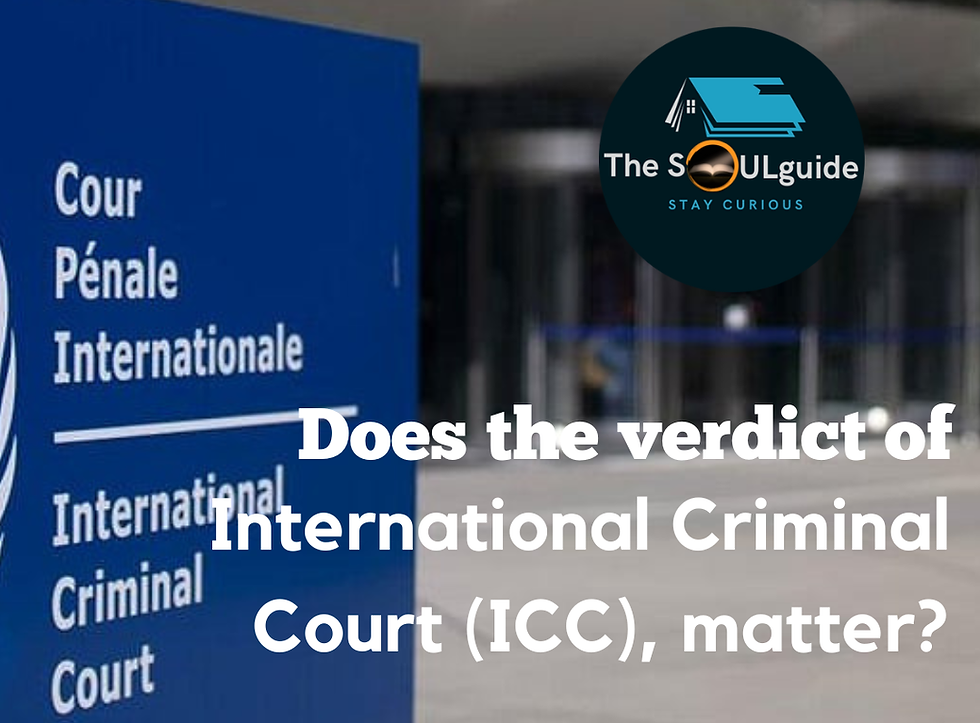Rich became more wealthy & poor got pushed into poverty. How the wealth is distributed in India?
- TheSoulGuide

- Dec 1, 2023
- 4 min read
Updated: Dec 2, 2023
The wealth of India is not less its just concentrated in few hands that the governments of the day find it a popular option to give free bie to the huge population who is below the poverty line. Its been a norm now that every political party in India announces freebies (a freebie is distributing any item such as free electricity or money or household item such as LPG for free on tax payers money) to win the elections. It is also said that India is the most unequal country in the world in terms of financial picture of the country.
The report, 'Survival of the Richest: The India story', By OXFAM also says that, Just 5 % of Indians own more than 60 % of the country’s wealth, while the bottom 50 % of the population possess only 3 % of the wealth.

The OXFAM report also said, between the year 2012 and 2021, 40 % of the wealth created in India has gone to just 1 % of the population and only a mere 3 % of the wealth has gone to the bottom 50 %, adding that the total number of billionaires in India increased from 102 in 2020 to 166 billionaires in 2022.
Further, the combined wealth of India’s 100 richest has touched $660 billion (Rs 54.12 lakh crore) — an amount that could fund the entire Union Budget for more than 18 months.
At the same time, the number of hungry Indians increased to 350 million in 2022 from 190 million in 2018. The widespread hunger is resulting in 65 % of the deaths among children under the age of 5 in 2022, according to the Union Government’s submission to the Supreme Court.
Following the pandemic in 2019, the bottom 50 % of the population have continued to see their wealth chipped away. By 2020, their income share was estimated to have fallen to only 13 % of the national income and have less than 3 % of the wealth. Its impact has been exceptionally poor diet, increase in debt and deaths.
This is in stark contrast to the top 30 %, who own more than 90 % of the wealth, with the top 10 % owning more than 80 % of the wealth concentrated in the top three deciles. The wealthiest 10 per cent own more than 72 % of wealth, and the top 5 % own nearly 62 % of the total wealth, which is higher than the pre-pandemic years (2018-19), and the top 1 % own more than 13 times the wealth owned by the bottom half of the society, with nearly 40.6 % of the total wealth in India.
However it is also important to note that, the bottom 50 % of the population at an All-India level pays six times more on indirect taxation as a percentage of income compared to top 10 %.
Secondly, of the total taxes collected from the food and non-food items, 64.3 per cent of the total tax is coming from the bottom 50 per cent, that means the poor is paying large volume of taxes combined but in return not earning upto the same levels.
A little less than two-third of the total GST is coming from the bottom 50 per cent, as per estimates, one-third from middle 40 per cent and only three to four per cent from the top 10 per cent.
Shockingly, many ordinary Indians are not able to access the health care they need. 63 million of them are pushed into poverty because of healthcare costs every year - almost two people every second.
Further, to squeeze the data more, the top 10% of the Indian population holds 77% of the total national wealth. 73% of the wealth generated in 2017 went to the richest 1%, while 670 million Indians who comprise the poorest half of the population saw only a 1% increase in their wealth.
Rising wealth of Indian Politicians.
The Association of Democratic Reforms has released a report on the asset of Indian MLAs after analyzing 4001 sitting MLAs from 28 state assemblies and two Union Territories in the year 2023. In India, Karnataka Deputy Chief Minister DK Shivakumar is the richest MLA in the country with assets worth ₹ 1,413 crore.
Among the richest MLAs in India, four legislators belong to Congress, and three are from the Bharatiya Janata Party (BJP).
ADR report also revealed that around 44% of sitting MLAs in India have criminal cases including murder, attempt to murder, and crimes against women, against them. Of 4,001 MLAs analyzed, 1,777 legislators have been charged with various criminal cases.
In Rajya Sabha, Among the major parties, the average assets per MP for 85 BJP MPs analysed is ₹27.44 crore; 31 INC MPs have average assets of ₹50.09 crore; 13 AITC MPs have average assets worth ₹4.34 crore; nine YSRCP MPs have average assets worth ₹395.77 crore; seven TRS MPs have average assets worth ₹799.46 crore; four NCP MPs have average assets worth ₹118.71 crore; and 10 AAP MPs have average assets of ₹131.66 crore.
What is shocking is, that most richest MPs belong Uttar Pradesh with 40 of them, both Houses combined, while UP is sadi to be one of BIMARU statez in India, that is it has been a burden on central governmentin terms of finances.
Maharashtra follows next with has 36 wealthy MPs, while Tamil Nadu and Andhra Pradesh have 23 and 20 of them, respectively.
Theres no opinion required in this, as the data says it all. The wealth of India lies with the few businessmen and politicians as well as political parties who are filthy rich.
Hopefully the citizens understand this soon.




Comments